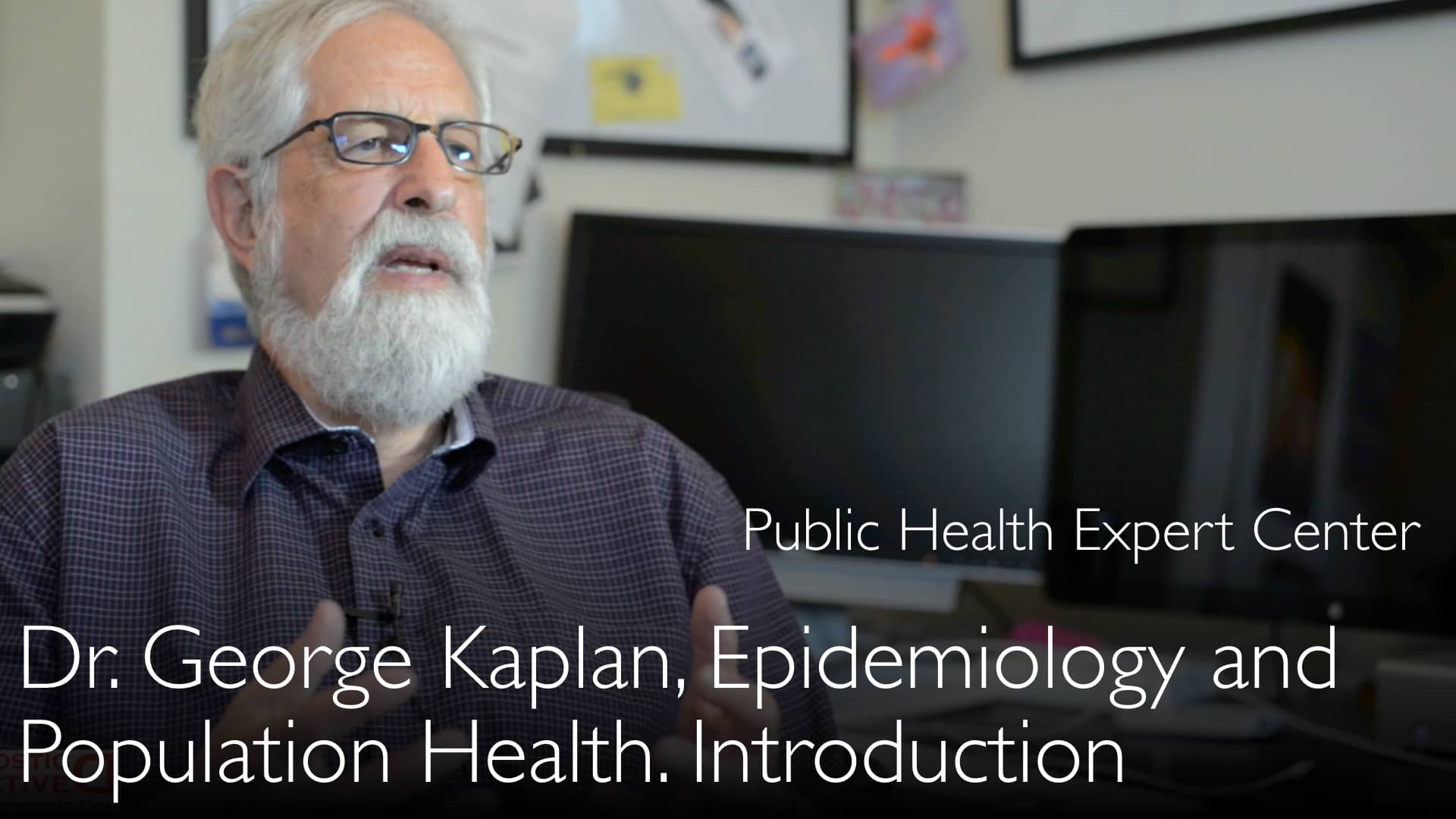O renomado especialista em epidemiologia e determinantes sociais da saúde, Dr. George Kaplan, explica como indivíduos e comunidades podem melhorar sua qualidade de vida ao adotar comportamentos saudáveis e políticas públicas adequadas. Ele destaca o sucesso expressivo das iniciativas antitabagismo, tomando os Estados Unidos como exemplo principal, onde as taxas de tabagismo caíram de 50–60% para 17%, e aborda os desafios globais ainda presentes, especialmente em países como a China, onde incentivos econômicos entram em conflito com metas de saúde pública.
Melhorando a Saúde da População: Estratégias da Ação Individual à Mudança de Políticas
Navegar para a Seção
- Responsabilidade Individual pela Saúde
- Conexões Sociais e Instituições
- Iniciativas Locais Antitabagismo
- Dados do Estudo do Condado de Alameda
- Tendências Globais do Tabagismo
- Barreiras Econômicas à Saúde Pública
- Objetivos Futuros da Saúde Pública
Responsabilidade Individual pela Saúde
O Dr. George Kaplan ressalta que cada pessoa deve adotar medidas proativas para melhorar sua saúde e qualidade de vida. Essa abordagem fundamental inclui buscar alimentação nutritiva, evitar o tabagismo e consumir álcool com moderação. Segundo ele, essas escolhas pessoais constituem a primeira linha de defesa contra doenças crônicas e são essenciais para todos, independentemente de origem ou nacionalidade.
Conexões Sociais e Impacto Institucional
Além da ação individual, o Dr. Kaplan destaca a forte influência das conexões sociais e do relacionamento com instituições influentes na vida das pessoas. Ele reconhece a dificuldade enfrentada por quem não tem poder para influenciar essas instituições, mas defende que intervenções nesse nível são cruciais. O epidemiologista explica que os laços comunitários e o acesso a redes de apoio são determinantes sociais fundamentais para resultados de saúde a longo prazo.
Iniciativas Locais Antitabagismo e Impacto Nacional
Um exemplo marcante de intervenção bem-sucedida em saúde pública são as políticas locais antitabagismo. O Dr. Kaplan cita a cidade de Brookline, em Massachusetts, que em 1994 foi um dos primeiros municípios a proibir o fumo em locais públicos. Conforme relatado ao Dr. Anton Titov, essa iniciativa local gerou uma mudança visível no comportamento da comunidade e serviu como catalisador para um movimento nacional mais amplo contra o tabagismo.
Dados do Estudo do Condado de Alameda sobre Redução do Tabagismo
O sucesso expressivo desses esforços é quantificado pelo Estudo do Condado de Alameda, citado pelo Dr. Kaplan. Essa pesquisa de longo prazo, iniciada em 1965, acompanhou as taxas de tabagismo na Califórnia. Os dados revelam uma queda extraordinária: de 50–60% de homens fumantes para cerca de 17% atualmente. O Dr. Kaplan enfatiza que a mudança cultural foi tão profunda que hoje o fumo é malvisto até por estudantes do ensino fundamental e médio.
Tendências Globais do Tabagismo e Disparidades
Apesar dos avanços em países ricos, o Dr. Kaplan observa que as tendências globais de tabagismo mostram disparidades significativas. Em sua conversa com o Dr. Anton Titov, ele contrasta o sucesso de nações como EUA, Reino Unido e Suécia com os desafios persistentes em outras regiões. As taxas de tabagismo estão caindo mundialmente, mas de forma menos acentuada e rápida em mercados emergentes e no Leste Europeu, refletindo uma vitória desigual da saúde pública.
Barreiras Econômicas ao Progresso da Saúde Pública
Um grande obstáculo para melhorar a saúde global são os incentivos econômicos que conflitam com os objetivos de saúde pública. O Dr. Kaplan ilustra isso com sua pesquisa sobre tabagismo na China, realizada há uma década, na qual descobriu que 17% da receita tributária do país vinha da venda de tabaco. Isso criou uma situação em que o estado tinha um interesse financeiro direto no consumo de cigarros pela população, representando um conflito fundamental para as políticas de saúde.
Objetivos e Desafios Futuros da Saúde Pública
O diálogo entre o Dr. Anton Titov e o Dr. George Kaplan encerra com uma perspectiva sobre o futuro da saúde pública. O epidemiologista manifesta otimismo quanto à “eliminação de doenças relacionadas ao tabagismo” em países mais ricos, considerando-a uma das maiores conquistas da saúde pública moderna. No entanto, ele reconhece que o tabagismo ainda é um problema global relevante, demandando esforços contínuos em nível individual e de políticas para alcançar equidade em saúde worldwide.
Transcrição Completa
Dr. Anton Titov: Muitas vezes, quem assiste a esta entrevista vem de uma origem menos privilegiada, talvez de um país mais pobre. O que essa pessoa pode fazer para melhorar sua situação na sociedade moderna, pelo menos no que diz respeito à saúde?
Dr. George Kaplan: Sem dúvida, todos devem assumir certa responsabilidade individual por suas ações. Precisam buscar uma boa alimentação, evitar fumar, consumir álcool com moderação, entre outros cuidados.
Mas também é crucial perceber que as conexões com outras pessoas e com instituições exercem impacto em suas vidas e, quando possível, tentar intervir nesses aspectos.
Isso pode ser difícil para quem não tem poder, pois é complicado influenciar instituições poderosas. No entanto, no caso do tabagismo em vários países, esforços locais evoluíram para iniciativas nacionais de políticas antitabagismo.
Em 1994, nos Estados Unidos, a cidade de Brookline, Massachusetts, perto de Boston, foi uma das primeiras a proibir o fumo em áreas públicas. Lembro-me de vir de Cambridge, Massachusetts, e notar significativamente menos pessoas fumando perto de casas noturnas, ou certamente dentro delas.
Esse é um exemplo de como uma intervenção local pode expandir-se para o nível nacional. As mudanças são enormes. No Estudo do Condado de Alameda, que acompanhei por anos e que começou em 1965, cerca de 50 a 60% dos homens na Califórnia fumavam na época.
Em 2014, esse número caiu para aproximadamente 17%. Se você for a uma escola de ensino fundamental ou médio hoje, verá que o fumo não é bem-visto pelos jovens. Estamos no caminho para eliminar doenças relacionadas ao tabagismo, pelo menos em países relativamente ricos.
Ainda é um problema grave. Cerca de dez anos atrás, ao analisar o tabagismo na China, constatei que as taxas entre homens eram muito altas. Na época, 17% da receita fiscal chinesa vinha da venda de tabaco. O estado tinha um interesse financeiro em que as pessoas fumassem, o que, obviamente, não era saudável para elas.
Dr. Anton Titov: Essa situação está melhorando na China, no Leste Europeu e em outros mercados emergentes?
Dr. George Kaplan: As taxas de tabagismo estão diminuindo globalmente, mas não tão drasticamente ou rapidamente quanto caíram nos EUA, Reino Unido, Suécia, países nórdicos e outros.








